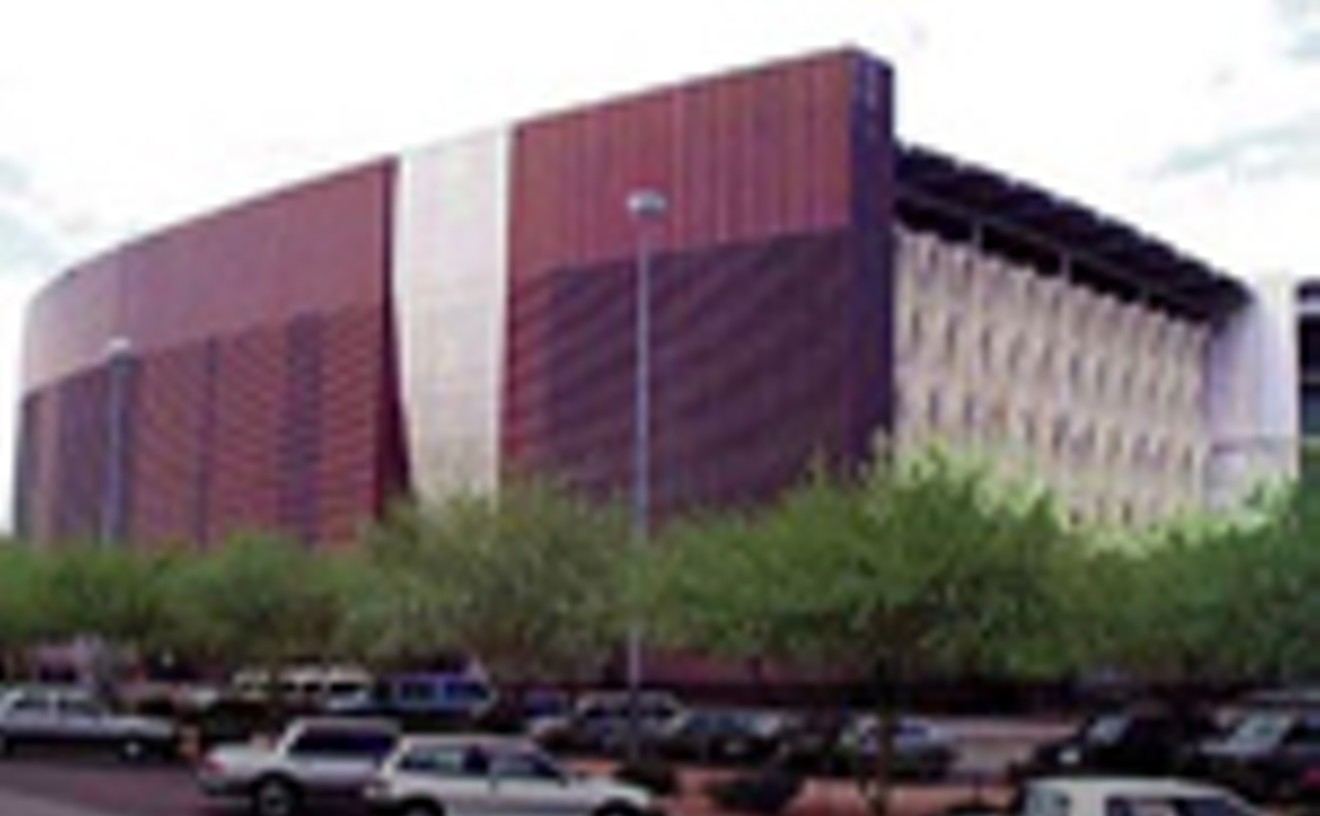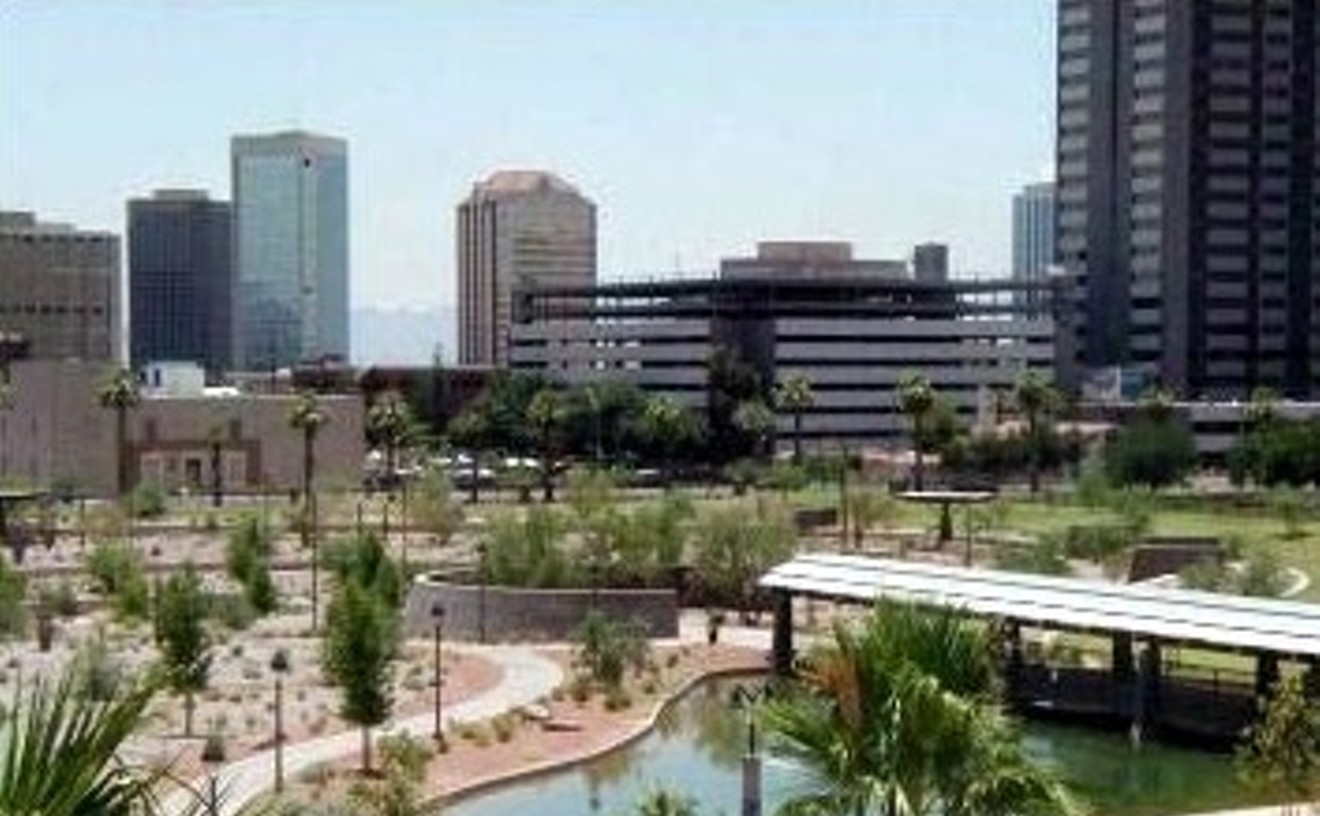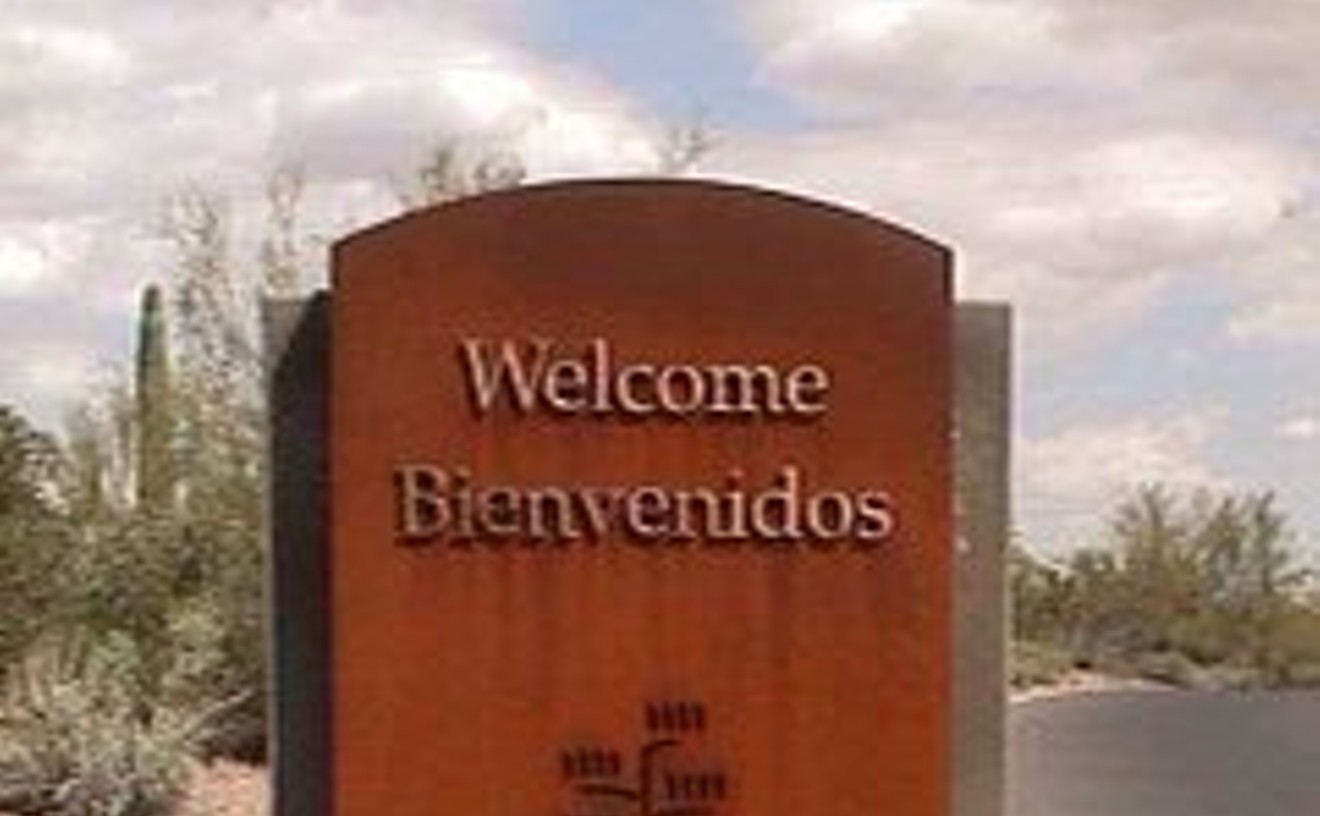Where else can you combine live music, hot chocolate, twinkly lights, and the most gorgeous desert plants in the world? Lucky for us, the Desert Botanical Garden is located smack in the center of the Valley, and the long-honored garden tradition of holiday luminaria is still going strong. The season just isn't complete for us without tickets to this event, featuring carolers, bell players, and other local musical acts. It may not snow in these parts, but it begins to look a lot like Christmas when we throw on a light jacket and head off into the night to the Desert Botanical Garden.
Best Holiday Attraction
Las Noches de Las Luminarias at Desert Botanical Garden
Best Desert Art Studio
Cattle Track Arts Compound
Just a few miles from the Old Town Scottsdale gallery scene, you'll find a different kind of artistic destination. For more than seven decades, Cattle Track Arts Compound has been attracting both artists and appreciators of the arts to its Old West complex, hidden amid the desert landscape. Since engineer George Ellis built the original structure with recycled materials in 1937, Cattle Track has acted as workplace and sometimes home of some of the most creative artists in our state's history, including Philip Curtis, who helped to found the Phoenix Art Museum. Today, Cattle Track offers frequent events ranging from art shows to live performances and houses a blacksmith, Cattle Track Press, painters, photographers, and a number of other creatives.
- 6105 N. Cattle Track Rd., Scottsdale, 85250 Map
- 480-607-3658
Best iPhone 6 Photo
Andrew Pielage
Phoenix photographer Andrew Pielage put the Arizona desert on the map — and the billboard, and the magazine ad, and so on — earlier this year when his gorgeous photo was chosen by Apple as part of an iPhone 6 ad campaign. (Pielage signed a deal with Apple that prevents us from showing you the photo here.) New Times is lucky enough to call Pielage one of our own — beautiful desert photography graced this year's Best of Phoenix marketing campaign. We're glad the world's gotten a chance to take note of him, too.
Best Collection of Desert Flora and Fauna
Arizona State University Natural History Collections
It would be easy to lose a few hours inside Arizona State University's Natural History Collections. The collection is home to one of the largest acquisitions of plants and animals from the Sonoran Desert and the world. There are taxidermy turtles, deer, and owls. In one room, there's a wall of rattlesnakes and lizards coiled up in jars. In another, there are 2,600 drawers filled with nearly a million insects, each one carefully preserved, mounted, and classified.
For decades, the collection was hidden away in the basement at ASU, where even researchers had a difficult time accessing it. But in October, officials moved all the fossils, plants, birds, fish, reptiles, mammals, and insects to its own building in Tempe with the goal of making it more available to the public. The front half is much like a museum, with skeletons and skins on display. In the back, visitors can observe scientists at work. Call ahead to plan a visit.
- 451 E. Tyler Mall, Tempe, Map
- nhc.asu.edu
Best Place to Map Out Your Desert Exploration
Arizona Room, on the second floor of Burton Barr Central Library

If your kind of adventure is somewhere off the beaten path (and out of social media range), then once you've packed your compass and flare kit, look no further than the resources in Central Library's Arizona Room. The gold mine of culture is packed with hidden treasures of Arizona's past and is home to a number of maps so rare that the library staff won't let anyone with a pen through the door (pencils only, please). In the collection: 7.5-minute topographic maps, aerial surveys of Phoenix dating back to 1968, a historic Sanborn map, and countless books on all kinds of surveys of the Arizona desert. And if you finish planning with time to spare, don't miss the giant map of Phoenix on the wall on the library's second floor, which offers a rare and historic look at the city we too often view through the lens of a smartphone.
- 1221 N. Central Ave., Phoenix, 85004 Map
- 602-262-4636
- www.phoenixpubliclibrary.org
Best Artist Farmer
Matthew Moore
When Lisa Sette Gallery in midtown Phoenix culled works for its "30 Years" exhibition in March, a C-print showing Matthew Moore's transformation of a piece of land into the likeness of a housing tract was among them. The Phoenix artist also is a fourth-generation farmer, and he reacted to news that his grandfather had sold family land in Surprise to a developer by replicating plans for its development using the land itself as his canvas and crops as his media, creating 253 houses with sorghum and making roads seeded in wheat. He's also used a hoe to make 8-foot-wide lines depicting the enlarged floorplan of single-family house using a 20-acre barley field as his canvas. His 2012 And the Land Grew Quiet, a 5,000-square-foot installation at the Phoenix Art Museum explored American cycles in agriculture and economics, and his 2014 talk for TEDxManhattan considered the ways art can change the way people eat. By merging art with farming, Moore fuels conversations about what Americans value, and ways this should be reflected in policy and practice.
www.matthewmooreartist.comBest Haboob Photographer
Mike Olbinski
Chances are you already know the work of Mike Olbinski and just don't realize it. If you've seen a breathtaking photo of a giant wall of dust about to overtake Phoenix amid the perfect lighting at dusk, or a haboob rolling into the city mirrored by pink clouds at sunset, you've seen Olbinski's creations. While most photos of our giant dust storms are interesting, this native photographer's shots are simply works of art. And his repertoire isn't limited to haboobs — any interesting weather formation captures his eye, and Olbinski in turn captures it at the perfect moment. When he isn't running around Arizona and nearby states chasing storms, Olbinski fills his time photographing portraits and weddings, which actually may not be too different from photographing storms.
www.mikeolbinski.com/stormsBest Use of Desert Topography
Mary Shindell
Bougainvillea doesn't grow on the moon, but that didn't stop Phoenix artist Mary Shindell from imagining how the surface and texture of each relates to the other. The Sonoran Desert has defined her as an artist and an individual, according to Shindell's own artist statement. Shindell's work explores similarities between images of Earth captured from far away and images of desert plants taken at close range. Desert topography most people typically find dull became decidedly cool during Shindell's January 2015 "Inflection Point" exhibition at Five15 Arts on Roosevelt Row, which included a graphite and ink drawing merging the topography of the moon and the Estrella Mountains just southwest of metro Phoenix. Shindell's take on desert topography lends new perspective on the landscape of our lives.
www.maryshindell.comBest Rumored Snack for Your Desert Plant
Bong water
In the category of "advice that should only be taken while stoned" comes a gem found in the depths of Internet forums: Feed your plants with bong water. From cacti and succulents to aloe and bathtub weed, a few pot enthusiasts have taken to the web to spread their knowledge, questions, and findings. A sample: "My friend was telling me how his buddy uses bong water for his indoor house plants and it makes them grow crazy," "Like would the plants that you water with it be like smaller and lazier?" "I was sure this wasn't true until I saw another thread on here. It said that pouring bong water on ur plant is good for it. I dont know what to think anymore because both sides of the argument have good reasons for doing each one." A few quick calls to local dispensaries and nurseries (who all wished to remain unnamed), yielded stifled laughs — and an overwhelming "no." Just pour it out, dude. Or give it a try. Only one way to find out for sure.
Best Green Patch in the Desert
Steele Indian School Park

Farmland once sold to the federal government, which built the Phoenix Indian School (attended by 900 students in its heyday), since has been transformed into a thriving urban center of activity boasting indoor and outdoor performances spaces, dog parks, historical displays, open green areas, and covered ramadas. Three of the original buildings have been preserved, and the site also includes an American Indian Veterans Memorial. Now operated by the city of Phoenix, the park is used by multiple generations who enjoy walking, fishing, playing volleyball, and more. Paintings on 8-foot wooden panels done by local artists through a project spearheaded by Hugo Medina are installed facing the street along wrought-iron fencing around a portion of the park's perimeter. Like community gardens at the park, they're part of ongoing efforts by PHX Renews to activate a portion of the park that was previously a vacant lot. It's a fun place to hang out, a community gathering place that draws diverse visitors, and a testament to what's possible when people, organizations, and government collaborate for the mutual good.
- 300 E. Indian School Rd., Phoenix, 85012 Map
- 602-495-0739
- www.phoenix.gov/parks/sisp.html






